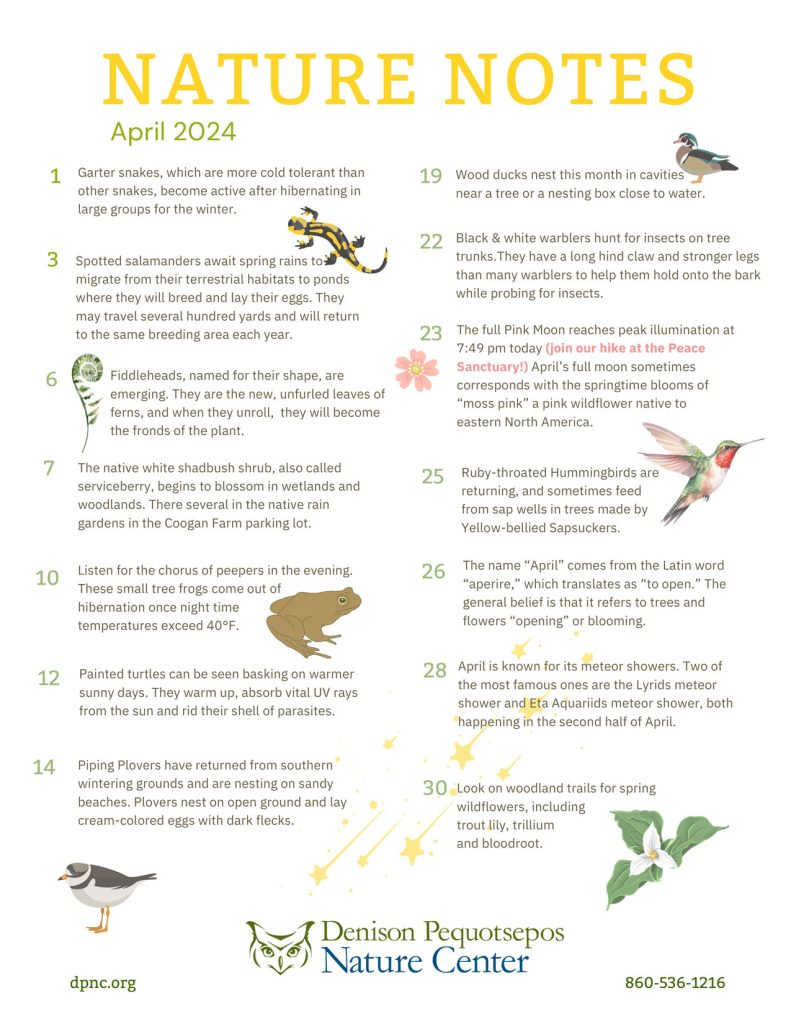April is here!
Skunk cabbage is one of the first native wildflowers to bloom in the spring. Despite its unappealing scent, this plant does attract early pollinators such as flies and bees. Look for skunk cabbage blooms amid the leaf litter in shades of purple, blue, pink and yellow in wetlands and along streams this month.
Another sure sign of spring is the return of red-winged blackbirds. These colorful birds migrate south for the winter and return to the northeast in early spring. We have spotted calling males all week at Coogan Farm on the phragmites. Red-winged blackbirds are easily spotted with their striking black feathers and bright red and yellow shoulder patches.
Mourning cloaks, the butterflies of spring, have emerged. After spending the coldest months in a hibernation-like state, they are usually visible by mid-March, just in time to dine on running tree sap.Watch for their colorful wings as they fly out of leaf litter!
And peepers are peeping–click to listen! Take a walk by the vernal pools at DPNC or other wetland areas and you’ll hear them loud and clear.

